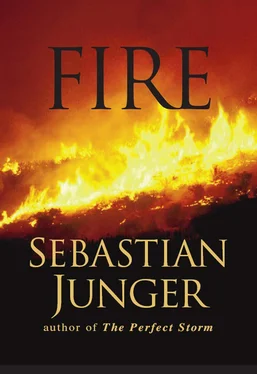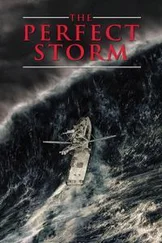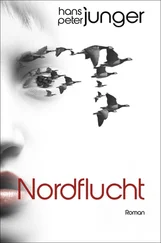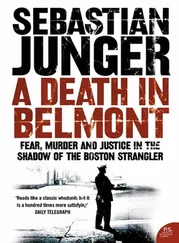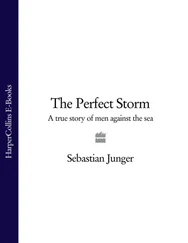The Green Line was established in 1963 by a British commander who was trying to quell street fighting that had erupted between Greek and Turkish militias. He supposedly took a green pencil and bisected a map of Nicosia from one side of the old Venetian fortifications to the other. Eleven years later, after the Turkish Army overran a third of Cyprus, the buffer zone was extended across the length of the island, a distance of 112 miles. A few months later the United Nations Peacekeeping Forces in Cyprus [UNFICYP] oversaw a massive, but peaceful, population transfer of 40,000 Turkish Cypriots from the south to the north to replace the estimated 175,000 displaced Greek Cypriots, most of whom had fled south during the invasion. The exodus was proclaimed voluntary as well as temporary, but of course it was neither. When the Turkish Republic of Northern Cyprus finally declared itself to be an independent state in 1983, all but the most optimistic refugees realized that they were never going home.
Today the two countries mark their borders as the cease-fire lines that were established in 1974. Between the lines is the buffer zone that none of the 190,000 Turkish Cypriots to the north or the 655,000 Greek Cypriots to the south may enter without special permission. Per capita, Cyprus is the most militarized country in the world after North and South Korea—with 35,000 Turkish and Turkish Cypriot troops and 14,500 Greek Cypriot troops, monitored by 1,200 UN soldiers—yet it is one of the most peaceful: only 16 people have been killed along the divide since 1974. Greek Cypriots refer to the buffer as the dead zone. On Greek Cypriot maps, the Turkish Republic of Northern Cyprus is labeled “Area Occupied by Turkish Troops,” and in conversation, Greek Cypriots often refer to it as the so-called Turkish Republic or simply the pseudo-state. There are no embassies or consulates in the TRNC besides Turkey’s, and the UN does not maintain formal diplomatic relations with them. There is a checkpoint at Ledra Palace, in the middle of the buffer zone on the western edge of Nicosia, but only foreign passport holders may cross through it, and only from the south to the north and then back again. You cannot go in the other direction, and if you visit the TRNC, you must be out by 5:00 P.M.
Within Nicosia the Green Line doesn’t look like much, just a series of deserted streets that end at brick walls and cement barriers. Every so often appears a sandbag bunker with a Greek Cypriot soldier inside, invariably smoking a cigarette. The line has a strange pull to it, like the edge of a cliff or a third rail; it was the first place I went when I arrived in Nicosia. I dropped my bags at the hotel and walked past the fancy shops on Ledra Street to a cul-de-sac, where some staging had been set up against a concrete wall along the line. It’s the only place where tourists can look out over the rubble of no-man’s-land, and a flight of metal stairs has been installed to encourage viewing. While I was there, an English family arrived and trudged dutifully up to the platform, children licking at ice-cream cones and parents fiddling with camcorders. They looked over the railing at the ramshackle Turkish positions a hundred feet away, clucked their disapproval, and had their photo taken with a young soldier who was standing guard nearby. Then they wandered off to do more shopping.
The soldier had an M-16 slung around his neck and spoke fair English. I asked him if he and his buddies ever talked with the Turkish soldiers on the other side, but he told me that this was the one spot on the Green Line where the Turks don’t post guards. Apparently, tourists who step up to the platform occasionally get carried away and start yelling, and the Turks don’t want to deal with that. Elsewhere, though, the Turks will shout insults at the Greeks or throw rocks.
“Do you ever yell back?” I asked the Greek soldier.
“No,” he said, smiling. “We are careful not to provoke them, because we are the weaker side.”
It was a strange admission for a soldier to make, though in keeping with the general theme of the lookout point. Alongside were a photo exhibit of the wartime destruction and a map showing, day by day, the changing battle lines of the Turkish invasion. Few countries would offer up such evidence of their own worst defeat; it was practically a monument to Turkish military might. The point seemed to be that Cyprus was the object of unbridled aggression from a highly militarized government and that if the world didn’t act decisively, who knew what would happen next?
Thirty years ago it was the Turkish Cypriots who had to be careful not to provoke. The problems started in earnest in late 1954, when two Greek gun-running boats made the 250-mile crossing from the island of Rhodes to Cyprus and landed on a deserted stretch of the western coast. On board were hundreds of pounds of explosives and a former Nazi collaborator named General George Grivas, who had arrived to lead a guerrilla group called the National Organization of Cypriot Fighters. Known by its acronym, EOKA, the group was committed to kicking the British out of Cyprus—they’d been there since the Ottomans handed it to them in 1878—and eventually uniting Cyprus with mainland Greece. The prospect of union with Greece—“enosis”—presented a terrifying threat to the 18 percent Turkish minority in Cyprus, however, who in no way wanted to become Greek citizens. So it was with considerable alarm that they watched three hundred EOKA guerrillas, fighting with pipe bombs and homemade machine guns, elude twenty thousand British troops and forty-five hundred Cypriot police in the rugged Troodos Mountains. By 1959 the British still hadn’t been able to stamp out EOKA, so they gave the Cypriots their independence—and thus made Cyprus the rest of the world’s problem.
It was clear to the West that given the level of rhetoric, General Grivas wasn’t going to stop until he had achieved union with Greece, an outcome that Turkey would never permit. The south coast of Turkey lies only forty miles away, and a Greek military presence so close to its borders was unthinkable. If the enosis movement were to succeed, Turkey would invade Cyprus, Greece would intervene, and suddenly there would be—at the height of the Cold War—a full-blown conflict between two NATO members.
To prevent such a disaster, the British arranged for a meeting in Zurich between the antagonists. They finally agreed to a fabulously awkward constitution that provided for a Greek Cypriot president, a Turkish Cypriot vice-president, and disproportionately large Turkish representation in the parliament. England was to retain two military bases on the island, and both Greece and Turkey were allowed to contribute small contingents of troops for common defense. As signatories to the agreement, England, Greece, and Turkey all could intervene militarily if they deemed the Cypriot constitution to be in danger. On August 16, 1960, the Republic of Cyprus was born, with a former EOKA leader, Archbishop Makarios III, as president. Almost from the beginning the arrangement was a nightmare.
It was the contention of the Greek Cypriots that the Turkish Cypriot minority had no reason to fear for their safety and that hatred between the two groups was the result of Turkish propaganda and British manipulation. (“As late as 1955 Greeks and Turks had always lived peacefully together, like brothers,” reads a placard at Nicosia’s Museum of National Struggle. “Their relations had always been completely harmonious, and the Turks had never put forward any claim on the island.”) In reality, things had never been so rosy. Although they had tolerated each other for centuries, Greek and Turkish Cypriots had largely lived in separate communities, and calls for enosis drove the two groups even farther apart. By the early 1960s death squads of Greek nationalists were regularly killing Turkish Cypriots, who, instead of turning to the government for protection, started to gather into easily defended enclaves and arm themselves. In retaliation, the Greek Cypriots tried to strangle the Turkish communities with economic blockades, and the situation quickly escalated into gun battles in the streets. By late 1963 the Green Line had been established across Nicosia, but even that didn’t stop the fighting, and Archbishop Makarios finally appealed to the UN for help. Several thousand peacekeepers were sent in with a renewable ninety-day mandate, but by then the Turkish Cypriots had completely severed relations with the Cyprus government, and fighting was breaking out regularly between the two militias.
Читать дальше
